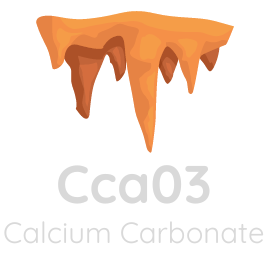
Thank you. Listen to this article using the player above. ✖
Want to listen to this article for FREE?
Complete the form below to unlock access to ALL audio articles.
Small iron-rich formations found within Western Australia’s Pinnacles, which are part of the world’s largest wind-blown limestone belt spanning more than 1000km, have provided new insights into Earth’s ancient climate and changing landscape.
The new research found the pinnacles were formed about 100,000 years ago during what was the wettest period in the past half-million years for the area, and very different from the Mediterranean climate Western Australia experiences today.
Lead author Dr Matej Lipar, Adjunct Research Fellow in Curtin’s School of Earth and Planetary Sciences, now at the Research Centre of the Slovenian Academy of Sciences and Arts (ZRC SAZU), said the spectacular finger-like stone pinnacles at Nambung National Park are a type of karst created by water dissolving rocks.
Want more breaking news?
Subscribe to Technology Networks’ daily newsletter, delivering breaking science news straight to your inbox every day.
“These formations offer crucial insights into ancient climates and environments, but accurately dating them has been extremely challenging until now,” Dr Lipar said.
“Karst landscapes, like those in Nambung National Park, are found globally and serve as sensitive indicators of environmental change. Studying them within an accurate timeline helps us understand how Earth’s geological systems respond to climate shifts.
“We found this period was locally the wettest in the past half-million years, distinct from other regions in Australia and far removed from Western Australia’s current Mediterranean climate.
“An abundance of water during this time caused the limestone to dissolve, forming the distinctive pillars of the Pinnacles and creating the ideal environment for the iron nodules to develop.”
Curtin co-author Associate Professor Martin Danišík, from the John de Laeter Centre, said the iron-rich nodules acted as geological clocks, trapping helium from the consistent radioactive decay of tiny quantities of naturally occurring uranium and thorium.
“Measuring this helium provides a precise record of when the nodules formed,” Dr Danišík said.
“The innovative dating techniques developed in this study reveal the nodules date back about one hundred thousand years, highlighting an exceptionally wet climate period.”
Study co-author Associate Professor Milo Barham, from Curtin’s Timescales of Mineral Systems Group in the School of Earth and Planetary Sciences, said being able to reconstruct past climate changes was important given the context it provides to understanding human evolution and ecosystems more broadly amid dramatic climate fluctuations over the past three million years.
“This new knowledge will enhance our understanding of global environments and ecosystems, helping us prepare for, and mitigate the impacts of, a warming planet,” Dr Barham said.
“This research not only advances scientific knowledge but also offers practical insights into climate history and environmental change, relevant to anyone concerned about our planet’s present and future.”
Reference: Lipar M, Barham M, Danišík M, et al. Ironing out complexities in karst chronology: (U-Th)/He ferricrete ages reveal wet MIS 5c. Sci Adv. 2024;10(40):eadp0414. doi: 10.1126/sciadv.adp0414
This article has been republished from the following materials. Note: material may have been edited for length and content. For further information, please contact the cited source. Our press release publishing policy can be accessed here.




